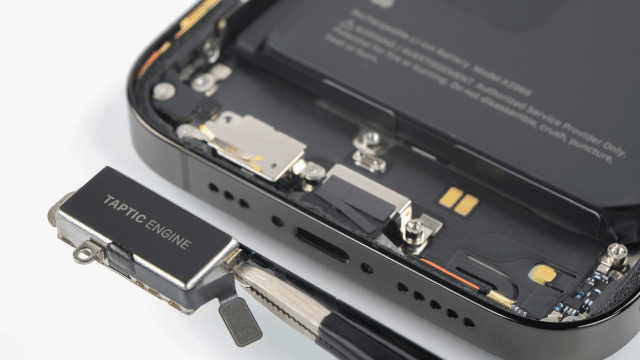Some of Apple’s most iconic designs are button-based — iPod click-wheel, anyone? — so it’s no surprise that the possibility of the company switching button mechanisms on the next iPhone is trending.
Ming-Chi Kuo, who has successfully predicted Apple’s upcoming moves countless times in the past, tipped off on Twitter that the next generation of the iPhone will feature solid-state buttons on the sides instead of mechanical ones. A solid-state button is essentially a mini trackpad, akin to the Home button on the second- and third-gen iPhone SE. Like that Home button, the new iPhones would employ what Apple calls Taptic Engines to offer haptic feedback when the power and volume buttons on either side are activated. This gives a user the illusion that they’re experiencing a satisfying button click, at least in theory.
“There will be Taptic Engines located on the internal left and right sides to provide force feedback to make users feel like they are pressing physical buttons,” explains Kuo, adding that this means the iPhone would jump from one Taptic Engine for vibration and haptic feedback to three after the switch.
It’s interesting to see Kuo mention how this hardware change would affect the rest of the smartphone industry. “It is expected that high-end Android smartphones will also follow Apple’s design to create new selling points,” writes Kuo, emphasising that this could be “a structural positive for the mobile phone vibrator industry.” And it’s not hard to imagine. For instance, Apple’s quick adoption of the eSIM standard has already spurred wonder on whether it will inspire Android manufacturers to eschew the SIM card slot in future phone models.
9to5Mac posits that this change would help Apple market the next generation’s iPhone 15/15 Pro as a durable alternative, which aligns with Bloomberg’s earlier report that Apple is pursuing an “ultra” variant of its smartphones. An iPhone with fewer parts to break and built to prevent water from seeping inside would fit perfectly with that marketing approach.
Now that the iPhone 14/14 Pro is out and folks have upgraded, expect to hear more about the iPhone 15. Bloomberg has already reported that a USB-C connector is on the way.
